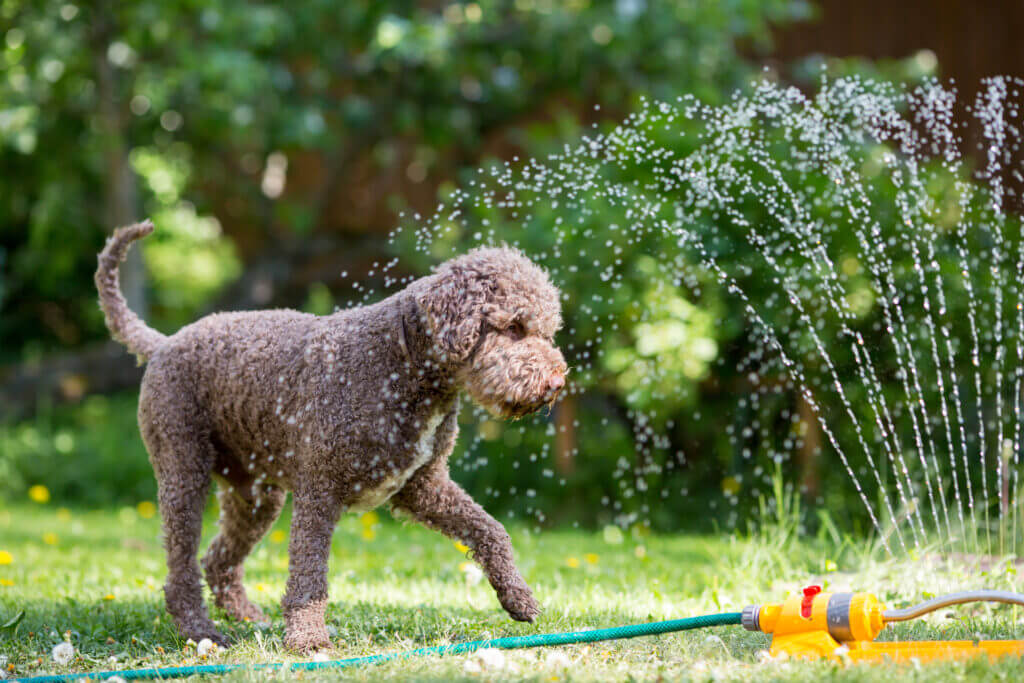If you live in New Jersey, it’s important to monitor your dogs closely for signs of heat exhaustion during the summer months. It gets hot in the Garden State, and while people can beat the heat by staying in air-conditioned spaces, dogs must go outside for bathroom breaks regardless of the temperature. They also need adequate exercise, which takes place outside, too.
Dog walkers and other pet care specialists are usually familiar with heat exhaustion, but the average pet owner isn’t. Thankfully, with a bit of research, you’ll know how to recognize the warning signs so you can respond right away if your dog ever gets too hot.
What Are the Signs of Heat Exhaustion?
Heat exhaustion is a severe form of hyperthermia characterized by a higher than normal body temperature. When dogs are healthy, their temperature should hover right around 101.5 degrees. When a dog’s temperature is slightly elevated, it’s considered a fever, and when the temperature rises above 105 degrees, it indicates heat exhaustion.
Dogs of all breeds and ages are vulnerable to heat exhaustion, especially in hot environments and for those weighing more than 110 pounds. However, some breeds have a higher risk of developing the condition than others including very long-haired breeds and those that are brachycephalic (having short noses and skulls). Specific breeds at increased risk of heat-related illness include: French Bulldogs, English Bulldogs, Pugs, Chow Chows, Mastiffs, Golden Retrievers, Greyhounds, King Charles Spaniels, and English Springer Spaniels.
Signs a dog is suffering from heat exhaustion include:
- Panting
- Drooling
- Warm skin
- Rapid heart rate
- Dry nose
- Lethargy
- Vomiting
- Muscle tremors
- Seizures
If your dog ever exhibits any of the above, stop all activity and get them to a cooler environment right away to see if their condition improves. If it doesn’t and you don’t have a thermometer, take them to the vet immediately for a comprehensive assessment.
If you do have a rectal thermometer, take your dog’s temperature to determine the severity of the situation. If it’s between 101.5 and 105, you should consider it an emergency and take your dog to the vet promptly.
If it’s over 105, you need to stabilize your dog before putting them in the car. You can do this by sponging or hosing down your dog’s entire body with cool (but not ice cold) water. Pay special attention to their belly and underside, which will respond the fastest to the cool water. After several minutes, retake their temperature. Repeat until it drops to 103 degrees, but do not go any further as their temperature could descend to hypothermia levels. Then, take your dog to the vet immediately for further care.
How Can You Prevent Heat Exhaustion in Dogs?
As the saying goes, an ounce of prevention is worth a pound of cure. Here are the most common scenarios that lend to heat exhaustion in dogs, as well as a few strategies for mitigating the risks they pose:
- Walking on Hot Asphalt: If your typical route includes asphalt, avoid taking your dog out during the hottest time of day. If that’s not an option, there are special booties you can purchase to protect your pup’s paws en route. Applying a topical solution like Paw Wax before every walk is also a viable option as it will provide a layer of protection to keep out the excessive heat.
- Staying Outside for an Extended Period: If there are no heat advisories in effect, most dogs can remain relatively comfortable outside; however, they still need a few things to keep heat exhaustion at bay. This is especially true for pups that love prancing around. For example, you should ensure your dogs have easy access to plenty of shade for the entire duration of their time outside (i.e. they should still be able to sit in the shade even after the sun moves). You should also supply lots of fresh, cool water.
- Sitting in the Car: Dogs might enjoy tagging along on errands, but unless you can bring them inside the establishments, it’s best to leave them at home during the warmer months. A parked car is essentially a greenhouse even with the windows open. The interior can reach incredibly high temperatures in less than an hour! Don’t rely on letting your car run either. It’s not uncommon for a vehicle’s air conditioning to fail after the stress of working overtime in the summer months. The result could be a worst-case scenario!
You Can Trust the Dog Walkers at ESP Pet Specialists to Keep Your Pups Cool All Summer Long
If you need a dog walker or pet sitter this summer, turn to ESP Pet Specialists. Serving clients across northern New Jersey, we will take care of your furry family members like they’re our own. To learn more about our pet care specialists, check out our website. To discuss your needs with a friendly pet sitter on our team, call (973) 577-1110.

